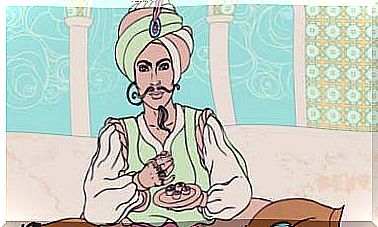Two Routes To Persuasion: The Elaboration Probability Model

Persuasion is understood as any change that occurs in people’s attitudes as a result of their exposure to a communication. To this should be added that such communication is intentionally designed and executed in order to persuade. Thus, persuasion would be understood as a change in attitude.
On the other hand, in persuasion the following elements come into play: the sender, the message, the receiver or audience, the context where the persuasion occurs, the channel through which the message is transmitted and the intention that the receiver or audience assume the proposals defended in the message. Given these elements, the best model for understanding persuasion is the probability elaboration model.

The change in attitudes
Persuasion seeks to change attitudes. Attitudes can be understood as a general evaluation that people make of objects, questions and other people, which are technically called attitude objects. Likewise, attitudes have three components: affective, cognitive and behavioral.
The affective component is based on emotions, the cognitive component focuses on beliefs, and the behavioral component on past behaviors or experiences. These three components constitute the psychological structure of attitudes from which the global evaluation springs and is materialized in behaviors. In this way, persuasion seeks to change what we feel, what we think, and ultimately what we do.
On the other hand, changes in attitudes can take two forms: polarization and depolarization. Polarization refers to the attitude that changes in the direction that the attitude initially presented, while in depolarization the attitudinal change is the opposite of the initial trend. In other words, polarization reaffirms us in our attitudes and depolarization leads us to adopt an attitude contrary to what we had.
The elaboration probability model
The best interpretation of persuasion is the one proposed by the elaboration probability model. This model proposes that there are two paths through which persuasion occurs: a central path and a peripheral path. Thus, the motivation to process the message will determine the path that is taken. Low motivation leads to the peripheral route while high motivation leads to the central route.
On the one hand, the central route implies a greater probability of elaboration; that is, pay close attention to the message and contrast the information with previous knowledge. On the other hand, the peripheral route requires that little effort be devoted; that is, that the information is not elaborated much.
Thus, the peripheral route leads to rely on situational indicators, such as making the issuer appear credible. In this way, the motivation that determines whether the message is produced by the central or the peripheral route will depend on different factors.

Motivation and capacity for elaboration
In the first instance, the motivation to understand the message and make a mental effort to do so, and the ability to process the message will determine the probability of elaboration, that is, the route.
On the one hand, the motivation is based on the importance of the message for the receiver, the inconsistency between the proposal of the message and the position of the receiver, the ambivalence of the topic, the number of sources of the message and the need for cognition (enjoy thought) of the receiver. On the other hand, the capacity will depend on the reception of the message, the elements of distraction present, the time available, the complexity of the message and the knowledge that the receiver has on the subject.
In short, when we receive persuasive communication, it will take a central route if we are motivated to process the information. Otherwise, the route will be the peripheral one.
Thus, the attitudinal change will occur depending on whether the message is attractive, provides arguments or names sources that we trust. On the other hand, if we are really motivated, our abilities to process information will also have an influence. If we do not have the necessary capabilities, it is likely that we will go the peripheral route, but if we do have them, it is likely that the information will go through the central route.
If the message is elaborated by a central route, we can generate favorable or unfavorable thoughts. Thus, if they are favorable, a polarization will occur and the attitude will be more favorable to the arguments in symphony with the message. Otherwise, depolarization will occur and our attitude will be more negative towards these arguments. The third possibility is that the thoughts are neutral, in which case they will return to a peripheral route.









